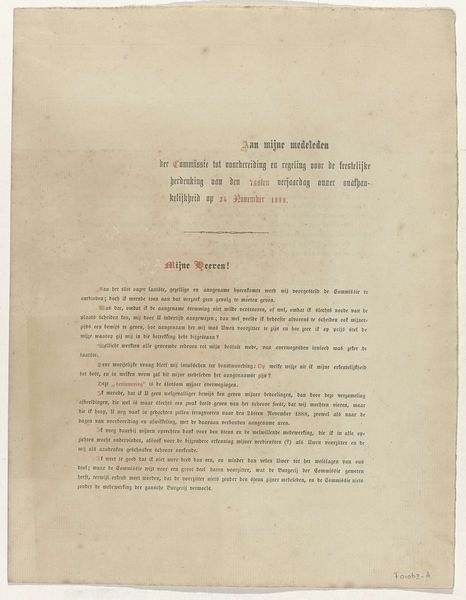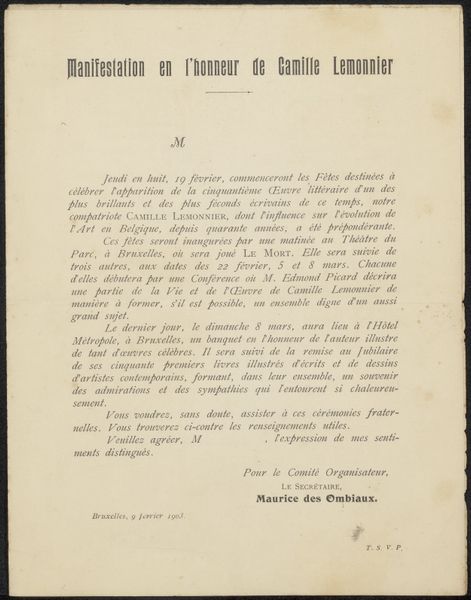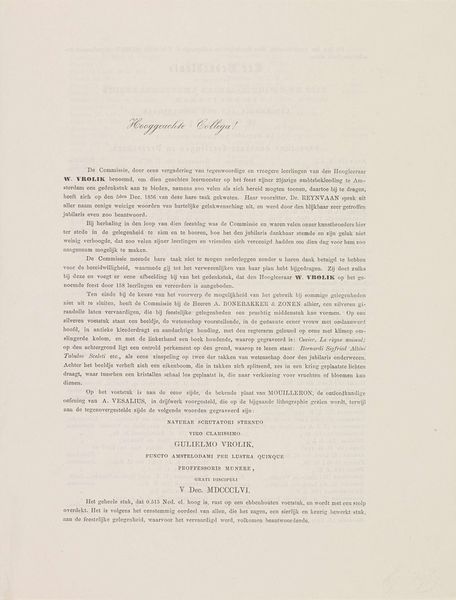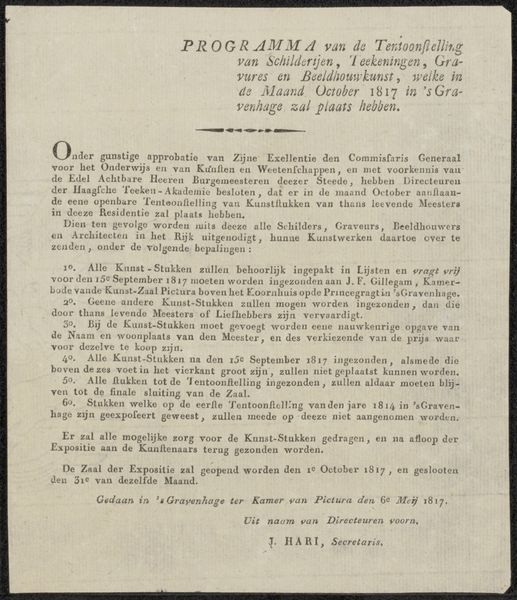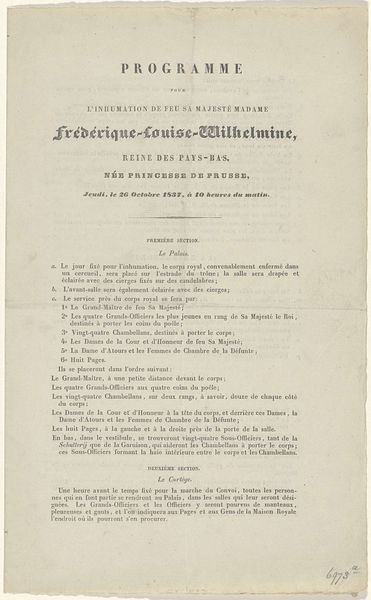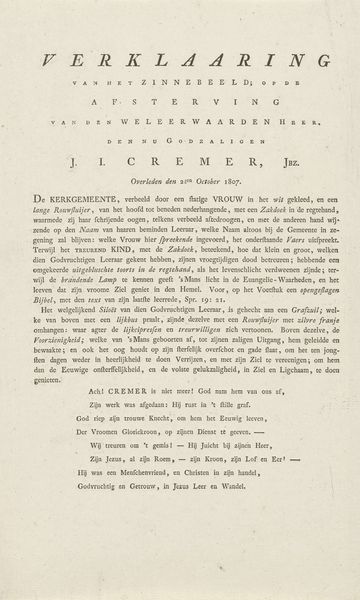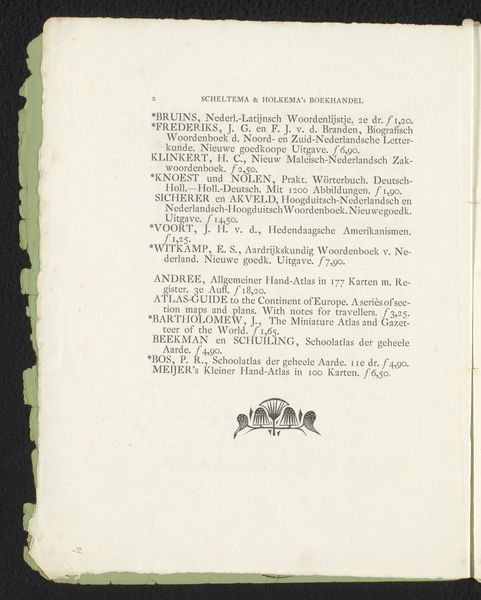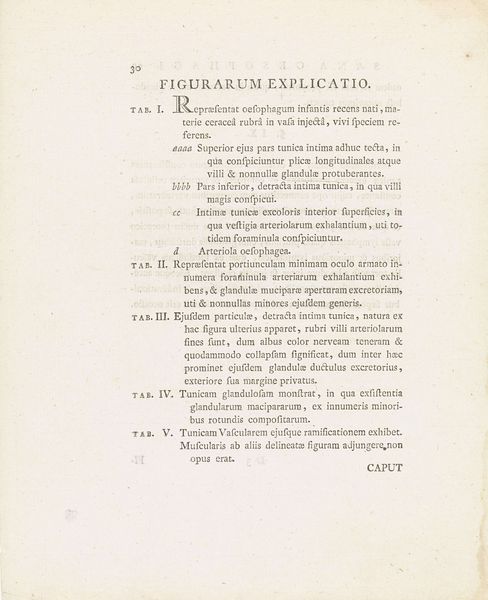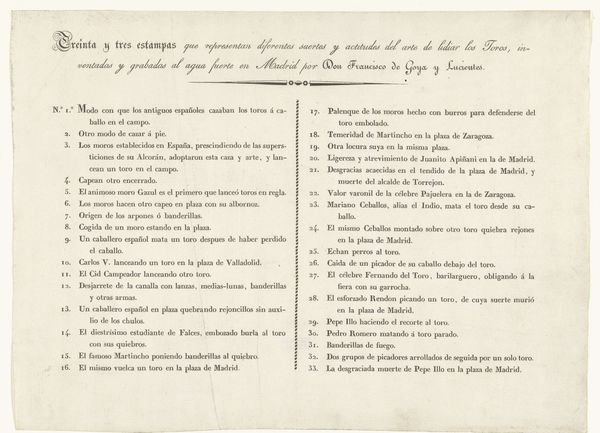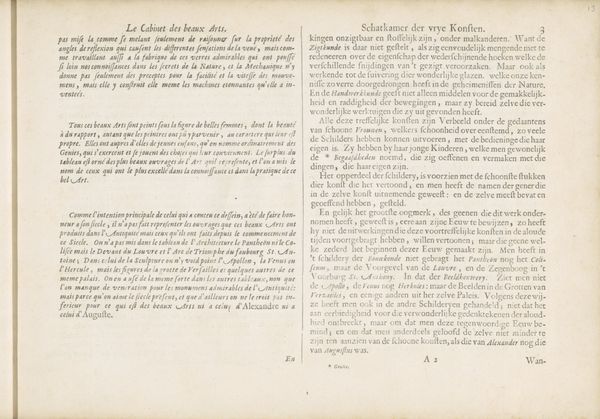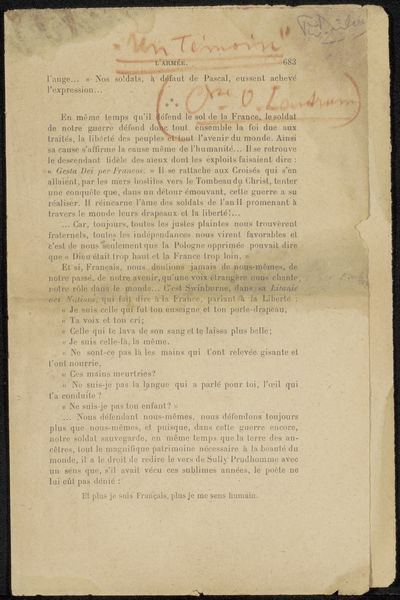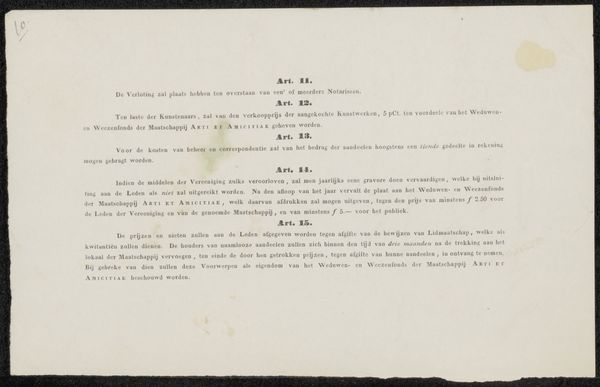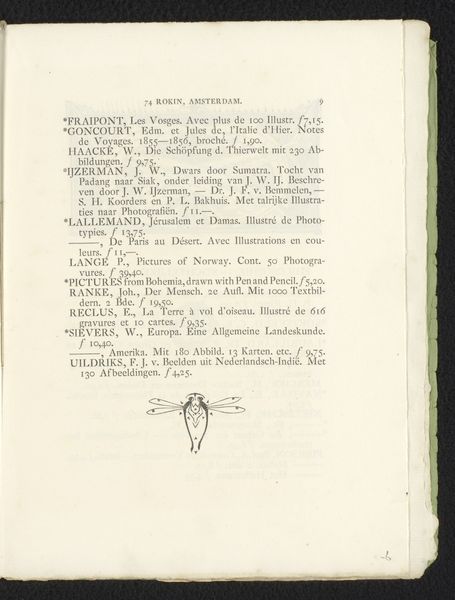
Programma van de ontvangst van het prinselijk paar te Brussel, 1825 1825
0:00
0:00
anonymous
Rijksmuseum
print, paper, typography
#
aged paper
#
neoclassicism
# print
#
paper
#
typography
#
journal
#
fading type
#
stylized text
Dimensions: height 316 mm, width 206 mm
Copyright: Rijks Museum: Open Domain
Curator: Here we have an interesting document from 1825, titled "Programma van de ontvangst van het prinselijk paar te Brussel"—the program for the reception of the Prince and Princess in Brussels. It's held at the Rijksmuseum and is attributed to an anonymous author. Editor: Immediately, I'm struck by the density of the text and the formality of its presentation. It's a glimpse into a highly structured social ritual, all meticulously planned. The aged paper speaks of history, a past now fading but not forgotten. Curator: Indeed. As a material object, this printed document showcases early 19th-century production techniques. We see typography rendered on paper. It points to the increasing accessibility of information dissemination during that era, moving beyond hand-written decrees to something more readily shared. The very act of printing and distributing such a program reinforces power dynamics and informs civic participation. Editor: Absolutely. And consider the function of this document within the broader context of the restored monarchy. The text outlines the precise choreography of the arrival of Prince and Princess Frédéric. It is a stage managed event designed to solidify the family's position, meant for public consumption. Every detail, from the troop formations to the cannon salutes, broadcasts power and legitimacy to the populace. Curator: I am curious to know who, beyond the functionaries mentioned in the document itself, this program was made for and how it was received. Was it only handed to dignitaries and high-ranking officials, or was this public information intended to shape perception more widely? I'm thinking about the audience, access, consumption. Editor: The stylized text is an important clue here. The choice of typography, and the paper it is printed on, signal authority. I see Neoclassicism here in the restraint of decoration, creating an image of order and decorum meant to mirror a specific kind of governance. Think of this in relationship to broader projects of state-building. How did these kinds of spectacles legitimize the ruling family within Belgium after a period of upheaval? Curator: The labor involved in creating this object, the role of the printer, even the ink itself tells its own story, right? This tangible object connects us to those less visible hands that helped uphold power structures. Editor: Precisely. Analyzing the layers embedded in a seemingly simple program can unveil the intricate workings of societal performances of the time. Curator: Thank you; those final considerations have shaped my appreciation for what this document truly conveys about the history of materials, manufacturing, and labor it encapsulates. Editor: Agreed, let's consider all we learn from such pieces and see what's missing!
Comments
No comments
Be the first to comment and join the conversation on the ultimate creative platform.
